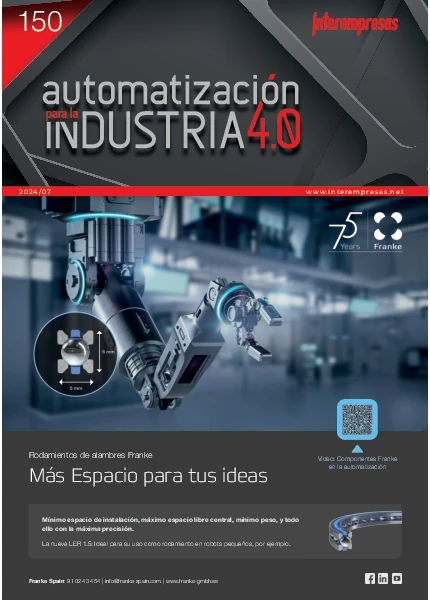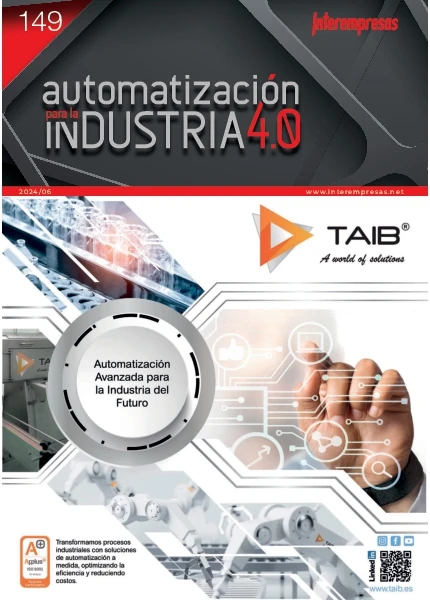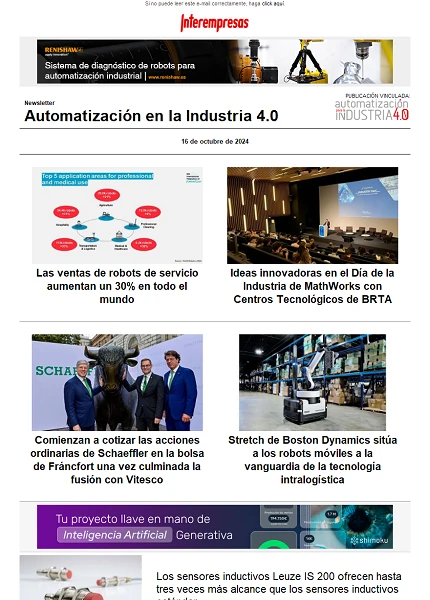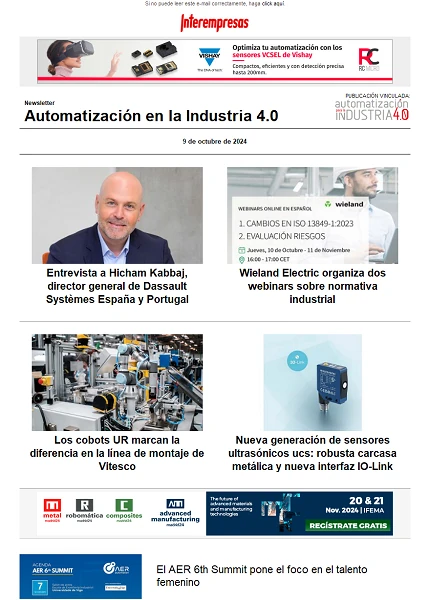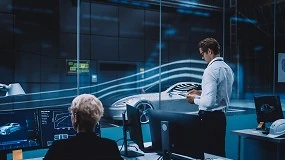Systems of help advanced to the driving
Some direct causes are the error of calculation, the error in the control of the dynamics of the vehicle, the meteorology, but in 38% of the cases appears the distraction. Likewise, also they can present aggravating like substances psicoactivas, the inexperiencia to the steering wheel, the cansancio and a long etcetera of possible situations that still do more difficult the task to drive.
All over the world are llevar initiatives with the aim to reduce the number of accident and the number of victims, well are injured or are mortal victims. Anyway, in each country the reduction of accidents takes different put and centres in those accidents that represent a high percentage of the accidentalidad total. If it takes like reference the European Community, the aim is to reduce in the year 2010 50% of the mortal victims taking like reference the values of the year 2000. If it takes like reference Japan, the aim also is to reduce 50% of the mortal victims, but in this case the horizon is the year 2013 and does special emphasis in the accidents that have to pedestrians like mortal victims.
In the European Community, the initiative and-Safety and the initiative Intelligent Car are two platforms that articulate projects that investigate and develop new solutions regarding systems of hygiene refers with the previously expressesed aim, that is to reduce the 40.000 dead persons and the more than 1,2 million injured that they produce every year in all Europe like consequence of accidents of traffic.
Systems HMI
The systems HMI (Human Machine Interface) mean the first step of the systems advanced of help to the driving. They are the systems that allow the dialogue between the user and the car, with the aim to simplify the handle of the different devices and do the process of driving safer. Like this then , one of the aims associated to these systems is to reduce the distractions that produce like consequence of a bad disposal of controls in the board, of some menus of access to the functions of the difficult vehicle or of overloads it of tasks and actions to control the systems of the vehicle while it drives .
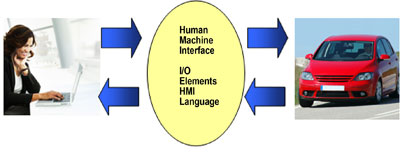
The technologies that use at present are the recognition and the synthesis of voice, the screens TFT and the tactile screens, the head up displays and the design and ergonomics of the controls of the control of the vehicle.
So that the driver seats comfortable with all these controls, these have to be easy to learn to use and to remember, do not have to carry to errors and have to be effective in his use.
Some examples of this type of systems show in the figure 2:
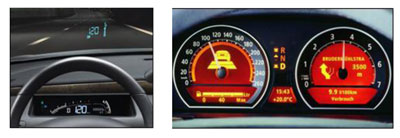
Systems advanced
But the increasing implementation of new systems, mainly of assistance advanced to the driving, does that the previous diagram no longer was adapted to describe the distribution of current systems. The systems ADAS (Advanced Driver Assistance Systems) and the systems IVIS (In-Vehicle Information Systems) have to add to the diagram of previous blocks.
- Systems advanced of assistance to the driving or systems ADAS (Advanced Driver Assistance Systems). Treats of systems whose main aim is to improve the hygiene and/or the confort, helping to the driver in his task to drive. Some examples are the systems of help to the change of lane, of warning in case of frontal collision, monitoring of the fatigue of the driver, etc.
- Systems of information in the vehicle or systems IVIS (In-Vehicle Information Systems). These systems provide information to the driver, although it does not have why be related with the main task to drive, as for example, telematic services or of communication, navigation, radio, CD, DVD, mp3, mobile devices, etc. Usually these functions enter a second task that potentially can interfere with the main task of driving.
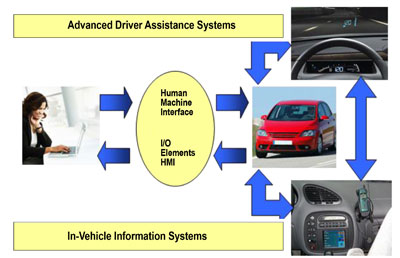
The systems ADAS add new technologies in the vehicle to implement functions advanced of assistance to the driver, with the purpose to do the safest driving. The systems ADAS have 3 main aims:
- Reduce the danger to have an accident
- In case that it produce , reduce his consequences
- Increase the confort of driving
Likewise, these systems can divide in three big families, that correspond to the systems of lighting, the systems precolisión and the systems that realise functions of interface between the vehicle and the surroundings, that are all those systems that detect and inform to the driver of possible dangers to the hour to realise manoeuvres.
Technologies
The implementation of all these new functions and systems require of the application of crowd of technologies. The main technologies that have purchased an important role inside the car are:
Technology radar:
Uses electromagnetic waves for the detection of distances and speeds of objects. They can be of long scope (77 GHz, with a high direccionalidad and a scope of 200 metres) or of short scope (24 GHz, with a big angle of detection and scope of 20 metres). His current applications are the systems of control of adaptative cruise (ACC) and the assistants of changes of lane (LCA).
Technology Lidar:
Consists in a do pressesed with an only wavelength. The do is narrow and concentrated, using the principle of reflection to determine distances. It arrives to a scope of 200 metres with a good precision (of mm). They exist two different typologies: multibeam and scanning laser. The main applications are in the detection of lines and objects.
Infrared technology:
The application of the infrared technology can realise by means of LED infrared or diode of infrared laser like emisor (the second is more managerial). The main applications are systems of nocturnal vision (Night Vision*) and systems of lateral control (LDW).
* In the Night Vision and with a camera of infrared near, the scope is of 150 metres, and with infrared far, the scope is of 300 metres.
Technology Camera:
Can use an only camera (cute) or two cameras (stereo). His utilisation is mainly for the detection of pedestrians and lines.
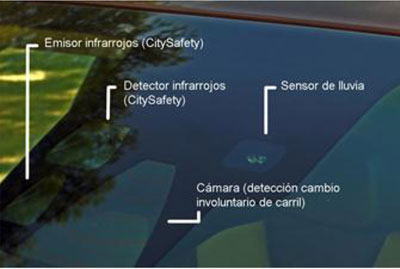
The final aim
The final aim of the implementation of all these technologies is the have a communication between all the elements that participate in the traffic, as it shows in the figure.5.
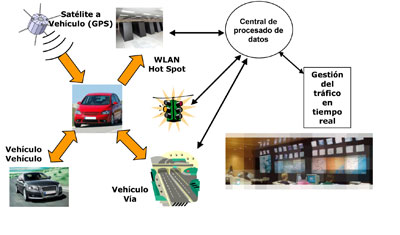
Like this then , with the implementation of all these technologies can obtain the maximum possible information through the sensors of the vehicles that circulate by the roads and of the installed sensors in the own roads, transmitting it to the centre of control of traffic and broadcasting information on any incidence to the vehicles that find in circulation.
Conclusions
The implementation of the systems of help advanced to the driving and of the systems of information in the vehicle has the aim to diminish the number of accidents and the number of victims, so much injured like dead persons, but also to improve the mobility in the roads of the road network.
Likewise, and in spite of that in the last years the concept of hygiene in the car has had a very important paper in the sector, the concept of sustainability is taking a big push and will be the axis of multiple developments in the next years, so much doing reference to the hygiene as to the sustainable mobility.


